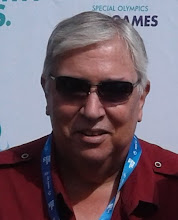From Sea to Shining C: The Way It Was, 13 January
1910: COME IN, CARUSO, YOUR TIME’S NOW---Legendary tenor Enrico Caruso’s performance is carried from the Metropolitan Opera House to a ship at sea by a Lee DeForest radio. Four years earlier, DeForest’s Audion vacuum tube---with three electrodes including a plate, cathode, and control grid---improved the earlier John Fleming’s diode vacuum tube detector and helped make longer-distance radio transmission possible. DeForest would also go on to broadcast perhaps the first known radio advertisements, spots for his own products, six years after his radio brought Caruso to sea.
1922: SAY WHA---Madison, Wisconsin station 9XM receives the Federal Communications Commission's sanction to use the call letters WHA.
Now part of National Public Radio and headquartered at the University of Wisconsin-Madison, the station is the flagship for talk-based Ideas Network in the state. As 9XM, it hit the air somewhat in 1914 and may have been the only U.S. radio station allowed to broadcast continuously during the U.S. involvement in World War I, during which time the federal government was believed to have closed all other existing domestic civilian radio operations.
1944: TOO MANY DOCTORS SPOIL THE ANTIHISTAMINE?---I can’t answer that question, but I can tell you that desperation drives Lou and his head cold to the sanitarium---after Bud lures him into yet another classic homonymous routine, "Fleeing Flu," on tonight’s edition of The Abbott & Costello Show. (NBC.)
1945: THAT’S HIS LIFE STORY AND HE’S STICKING TO IT---But he can't do it until a) Evie (that’s Eve Arden to you, ladies and gentlemen) practically bludgeons him into reading his first show’s fan mail; b) Lionel (that’s Lionel Stander to you, Elle and Gee) brings him a whole bushel basketful of letters, and c) he deals with one fan wanting autographed pictures of . . . Harry James (who provided his music, including a charming take of Duke Ellington's "I'm Beginning to See the Light," with future vocal star Kitty Kallen) and Ken Niles (his announcer). Compared to that, taking up his life story is . . . not quite so traumatic, on tonight’s edition of The Danny Kaye Show. (CBS.)
1946: BIZET GETS BUZZED---He does when then-Shakespearean actor Maurice Evans (the future father-in-law to Bewitched’s bothered and bewildered Darrin) aids and abets Mr. Allen in assassinating Carmen. That has to wait, however, for a small passel of postcards tied to Mr. A’s judging of an "I Can’t Stand Jack Benny Because . . ." contest, and the Allen’s Alley demimonde answering how women will fit into the post-World War II business world (hint: you’ll learn the one thing an American woman absolutely cannot become, ever, from none other than rip-roaring Senator Claghorn himself), on tonight’s edition of The Fred Allen Show. (Original: NBC. Rebroadcast: Armed Forces Radio Service.)












0 Comments:
Post a Comment
Subscribe to Post Comments [Atom]
<< Home